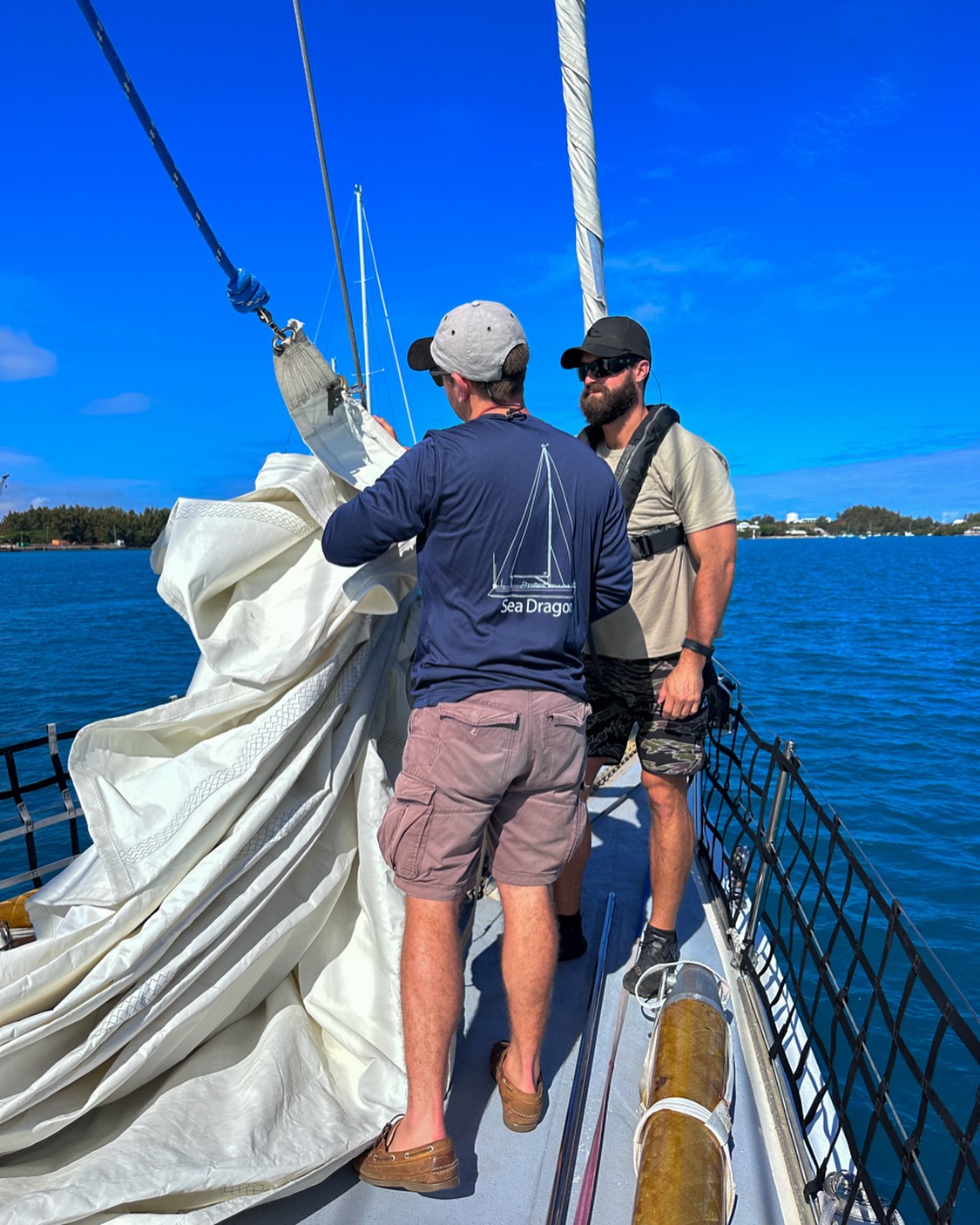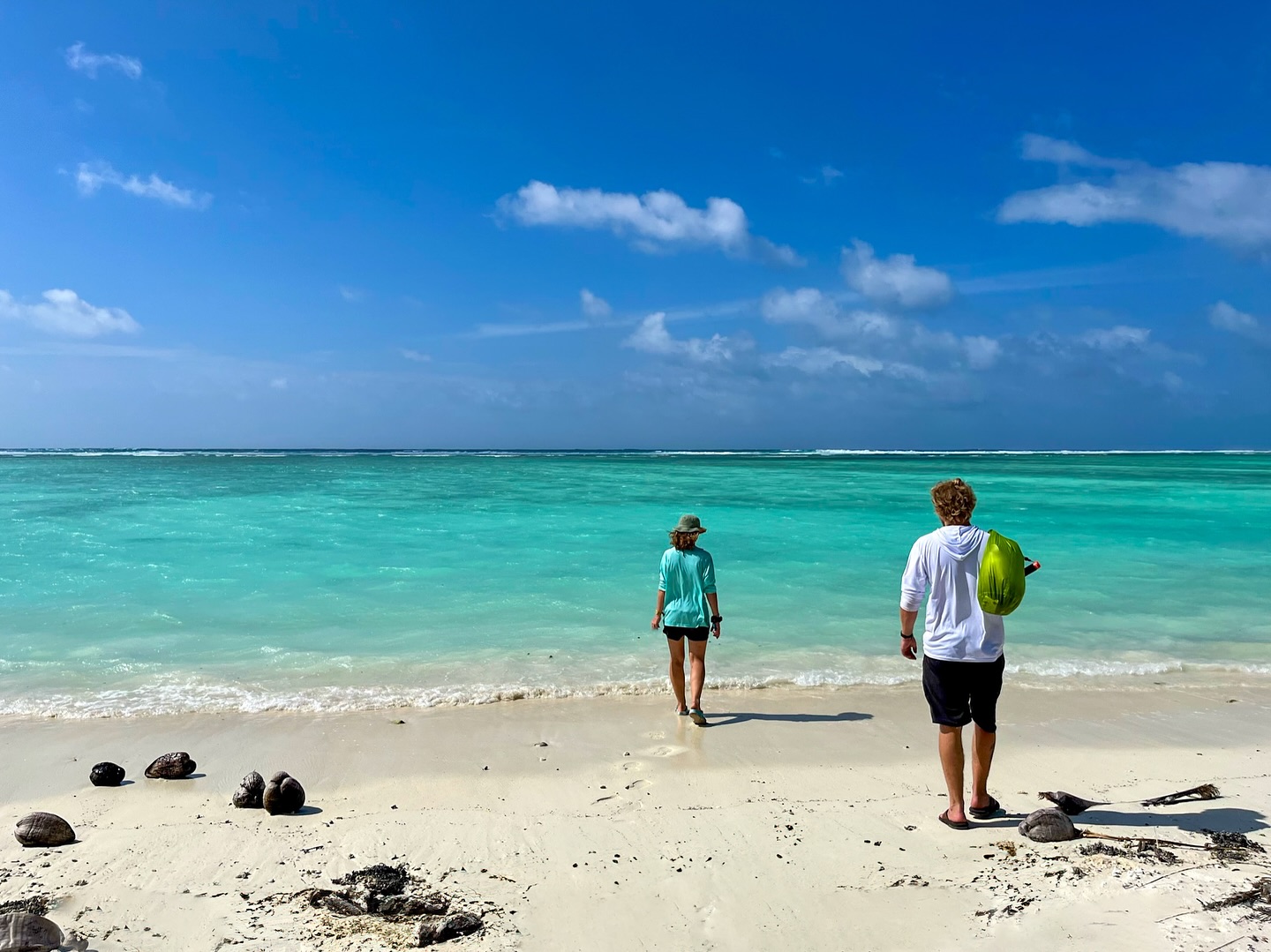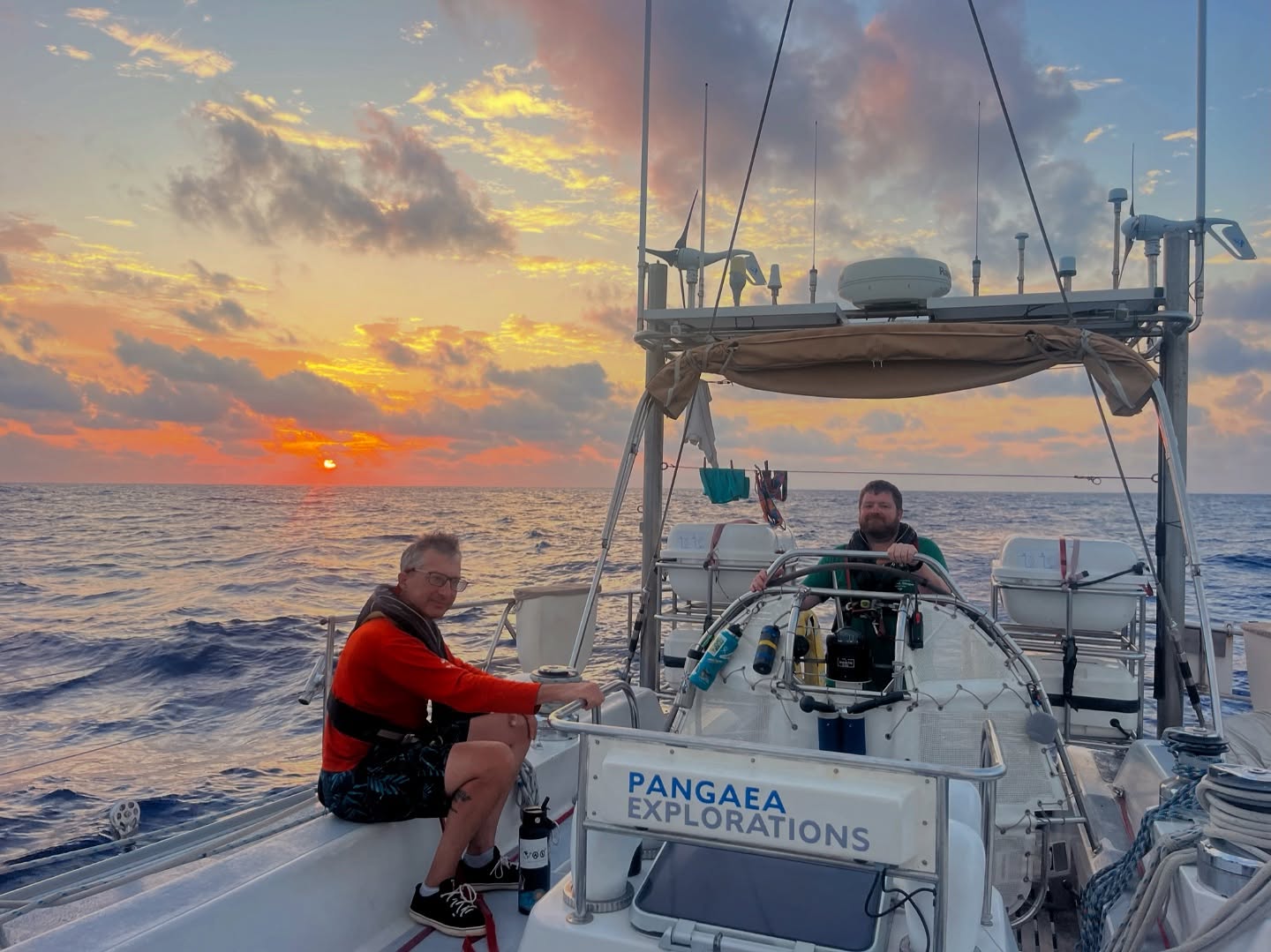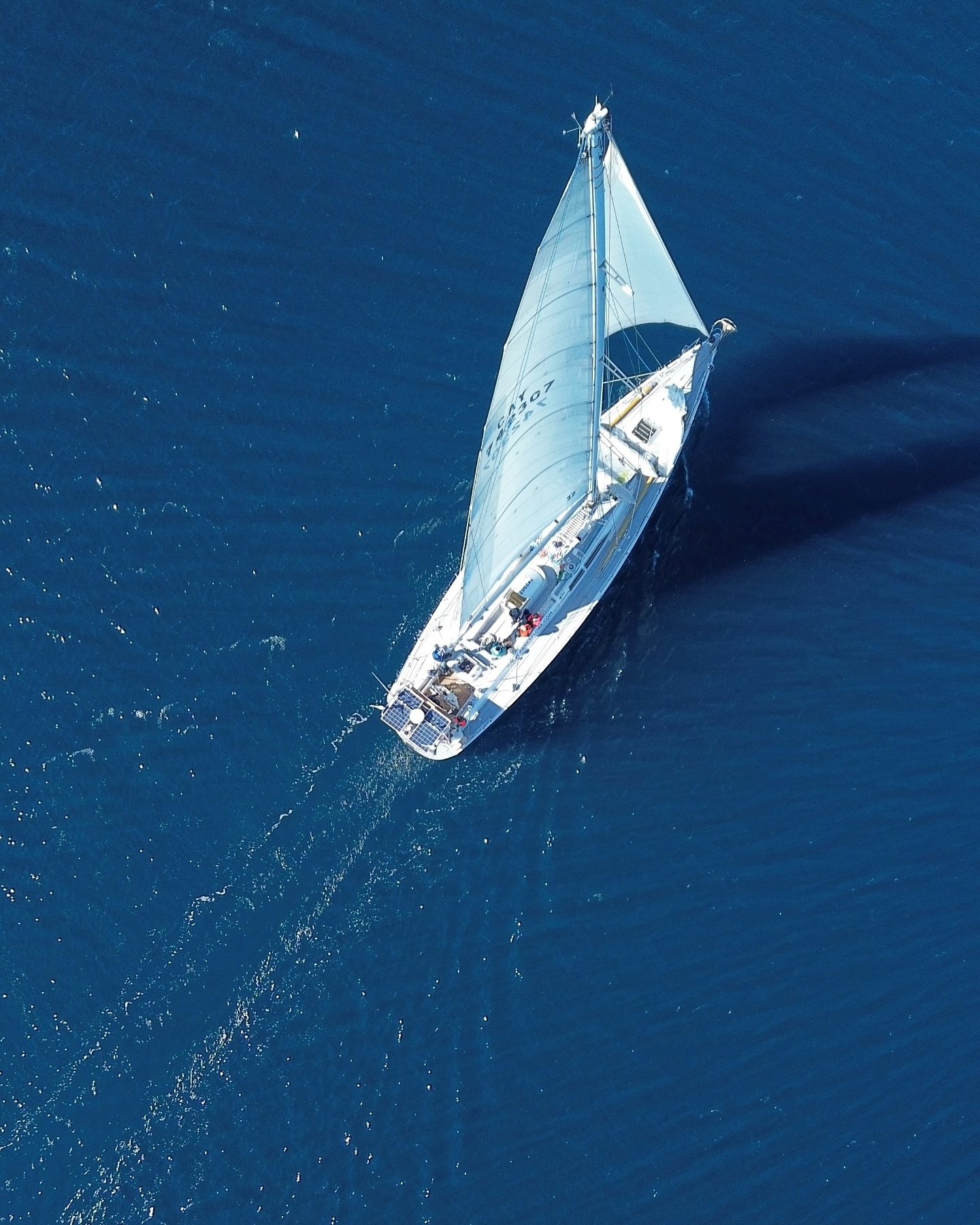After sailing for two and a half days, the 15th of June marked the day we were finally taking the multi-level trawl out for its first deployment. By now we had entered the high concentration area of the North Atlantic Gyre. The frequency of large objects floating along the boat was one indication, and finding microplastics in the boat’s saltwater pump was another.
With wind conditions of around Beaufort five, handling the 5.5m-long aluminium frame was a challenge, but created the prospect of collecting samples in conditions not seen during the four preceding expeditions. We successfully deployed the trawl twice that day, before catching up on sleep and preparing the equipment for the next day of trawling.
Today, with a now experienced crew and a comfortable 15 knot-wind, three back-to-back trawls were performed, each around an hour in length. Lots of millimetre to centimetre-sized particles were visible in the samples of the top few nets. Team member Francesco is currently working with some volunteers to clean the nets’ cod ends and prepare the samples for transportation.
Besides the in-situ plastic measurements we’re taking, we’re using a device called a CTD to measure things like conductivity, salinity and temperature, which helps us understand the behaviour of the plastic. Furthermore, we attached a pressure sensor to the bottom of the net, which tells us how far up and down the trawl went while sampling.
Over the next few days, we will continue to conduct measurements on the vertical distribution of microplastics in the North Atlantic Gyre, before heading back to Bermuda, from which the 6th and last multi-level expedition will leave later this month.
– Boyan Slat, The Ocean Cleanup founder and Mission Leader for The Ocean Cleanup Gyre Expedition #4, June 16, 2015































